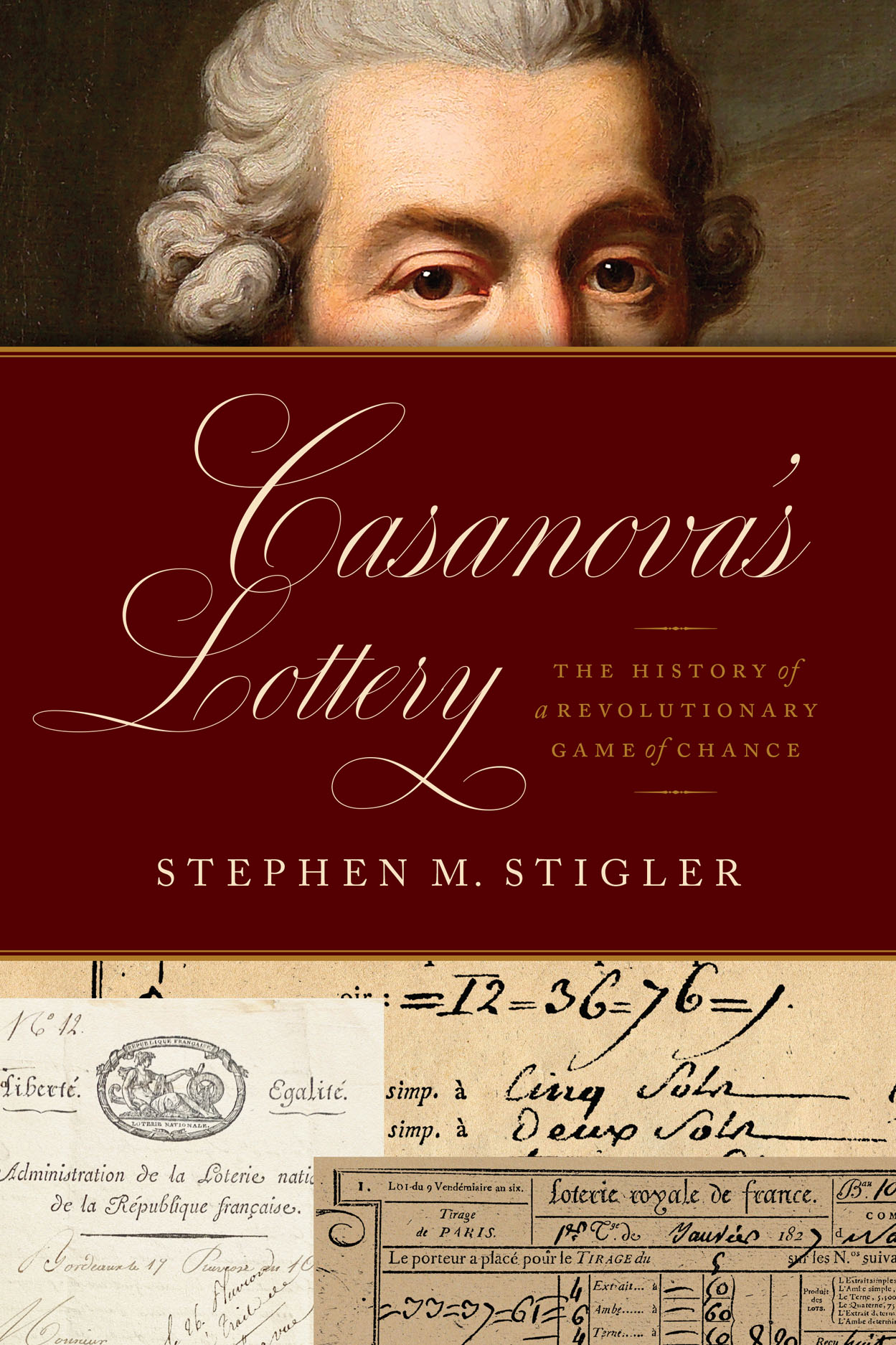Casanova’s Lottery [book review]
 This “history of a revolutionary game of chance” is the latest book by Stephen Stigler and is indeed of an historical nature, following the French Lottery from its inception as Loterie royale in 1758 to the Loterie Nationale in 1836 (with the intermediate names of Loterie de France, Loterie Nationale, Loterie impériale, Loterie royale reflecting the agitated history of the turn of that Century!).
This “history of a revolutionary game of chance” is the latest book by Stephen Stigler and is indeed of an historical nature, following the French Lottery from its inception as Loterie royale in 1758 to the Loterie Nationale in 1836 (with the intermediate names of Loterie de France, Loterie Nationale, Loterie impériale, Loterie royale reflecting the agitated history of the turn of that Century!).
The incentive for following this State lottery is that it is exceptional by its mathematical foundations. Contrary to other lotteries of the time, it was indeed grounded on the averaging of losses and gains on the long run (for the State). The French (Royal) State thus accepted the possibility of huge losses at some draws since they would be compensated by even larger gains. The reasoning proved most correct since the Loterie went providing as far as 4% of the overall State budget, despite the running costs of maintaining a network of betting places and employees, who had to be mathematically savy in order to compute the exact gains of the winners.This is rather amazing as the understanding of the Law of Large Numbers was quite fresh (on an historical scale) thanks to the considerable advances made by Pascal, Fermat, (Jakob) Bernoulli and a few others. (The book mentions the Encyclopedist and mathematician Jean d’Alembert as being present at the meeting that decided of the creation of the Loterie in 1757.)
One may wonder why Casanova gets the credit for this lottery. In true agreement with Stigler’s Law, it is directly connected with the Genoan lottery and subsequent avatars in some Italian cities, including Casanova’s Venezia. But jack-of-all-trades Casanova was instrumental in selling the notion to the French State, having landed in Paris after a daring flight from the Serenissima’s jails. After succeeding in convincing the King’s officers to launch the scheme crafted by a certain Ranieri (de’) Calzabig—not to be confused with the much maligned Salieri!—who would later collaborate with Gluck on Orfeo ed Eurydice and Alceste, Casanova received a salary from the Loterie administration and further run several betting offices. Until he left Paris for further adventures! Including an attempt to reproduce the lottery in Berlin, where Frederick II proved less receptive than Louis XIV. (Possibly due to Euler’s cautionary advice.) The final sentence of the book stands by its title: “It was indeed Casanova’s lottery” (p.210).
Unsurprisingly, given Stephen’s fascination for Pierre-Simon Laplace, the great man plays a role in the history, first by writing in 1774 one of his earliest papers on a lottery problem, namely the distribution of the number of draws needed for all 90 numbers to appear. His (correct) solution is an alternating sum whose derivation proved a numerical challenge. Thirty years later, Laplace came up with a good and manageable approximation (see Appendix Two). Laplace also contributed to the end of the Loterie by arguing on moral grounds against this “voluntary” tax, along Talleyrand, a fellow in perpetually adapting to the changing political regimes. It is a bit of a surprise to read that this rather profitable venture ended up in 1836, more under bankers’ than moralists´ pressure. (A new national lottery—based on printed tickets rather than bets on results—was created a century later, in 1933 and survived the second World War, with the French Loto appearing in 1974 as a direct successor to Casanova’s lottery.)
The book covers many fascinating aspects, from the daily run of the Loterie, to the various measures (successfully) taken against fraud, to the survival during the Révolution and its extension through (the Napoleonic) Empire, to tests for fairness thanks to numerous data from almanacs, to the behaviour of bettors and the sale of “helping” books. to (Daniel) Bernoulli, Buffon, Condorcet, and Laplace modelling rewards and supporting decreasing marginal utility. Note that there are hardly any mathematical formula, except for an appendix on the probabilities of wins and the returns, as well as Laplace’s (and Legendre’s) derivations. Which makes the book eminently suited for a large audience, the more thanks to Stephen Stigler’s perfect style.
This (paperback) book is also very pleasantly designed by the University of Chicago Press, with a plesant font (Adobe Calson Pro) and a very nice cover involving Laplace undercover, taken from a painting owned by the author. The many reproductions of epoch documents are well-done and easily readable. And, needless to say given the scholarship of Stephen, the reference list is impressive.
The book is testament to the remarkable skills of Stephen who searched for material over thirty years, from Parisian specialised booksellers to French, English, and American archives. He manages to bring into the story a wealth of connections and characters, as for instance Voltaire’s scheme to take advantage of an earlier French State lottery aimed at reimbursing State debtors. (Voltaire actually made a fortune of several millions francs out of this poorly designed lottery.) For my personal instructions, the book also put life to several Métro stations like Pereire and Duverney. But the book‘s contents will prove fascinating way beyond Parisian locals and francophiles. Enjoy!
[Disclaimer about potential self-plagiarism: this post or an edited version will eventually appear in my Books Review section in CHANCE. As appropriate for a book about capitalising on chance beliefs!]
January 12, 2023 at 8:49 am
Voila un compte rendu bien interessant.
January 12, 2023 at 12:00 pm
Le plus grand mystère étant l’arrêt de la loterie…